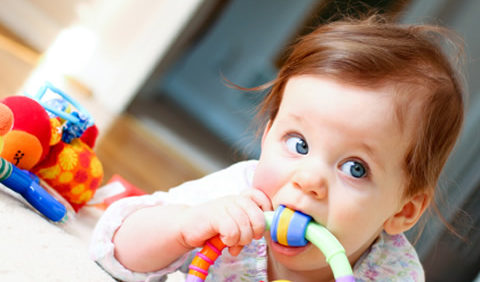Positive behaviour guidance

Connecting with children and engaging positive approaches to guiding children’s behaviours is key to addressing the behaviour.
It also facilitates positive relationships, builds self esteem and can lead to a reduction in challenging behaviours.
All children will require guidance at some time. A child is learning about their world and their place in it.
It is important to be aware and tailor how we react and how we address the behaviour.
First and foremost it is about addressing the behaviour depending on the age and development of the child and their behaviour.
Challenging behaviour, especially if it is a regular occurrence can be exhausting.
In turn we often tend to turn to the easiest way to stop said behaviour. This doesn’t address the behaviour, the underlying cause or assist in rectifying the behaviour in the long term.
Positive guidance can benefit a child’s development.
How do you positively guide a child’s behaviour
A child is born with a innate desire to develop skills, learn to do things for themselves and become capable.
A child’s natural curiosity and drive to become independent and explore and learn may mean that at times a child may push the boundaries and limits.
This can prove challenging and result in the child being seen as ‘misbehaving’ or defiant.
If we focus on the behaviour then we tend to place emphasis on the negative rather than identifying and looking at the root cause of the behaviour.
It is key to look at the cause and understand the needs, thoughts, feelings or intentions that are driving the behaviour.
Behind every behaviour is a child’s need, feeling or desire.
Employing positive approaches to guiding behaviour targets meeting the needs which can direct the behaviour rather than just trying to change the behaviour itself.
This enables seeing the child’s behaviour as an opportunity to build a child’s skills to further develop and an opportunity to support and guide a child.
Children need lots of opportunities to practice and learn skills and explore.
Building a strong and positive connection with your child can influence the behaviour and the interactions. A strong connection means a child feels a sense of security whereby they can approach and seek assistance and guidance.
A positive guidance approach does not mean that there will not be challenging situations.
A positive guidance approach provides a good foundation for working with your child to manage their emotions and behaviour.
Positive guidance strategies
- Pause before you respond. This provides you the chance to evaluate the situation and to calm your reaction.
- Reasoning. Explain the limits. When your child doesn’t understand what you expect, explain your reasons for what you expect them to be behaving like. Try to keep it positive, specific and short in the explanation.
- Remind them. When your child forgets what is expected give them a reminder about the expectation or the rule again. Explain the consequences. Give them a set amount of reminders before there is a consequence to the ‘forgetting’ the rule. Always keep the same amount of reminders- such as 3 warnings so that’s consistent and they know the limit.
- When you did not see what happened or are unsure about what exactly occurred it’s a good idea to ask your child to describe the problem or the incident. This way you can determine how much your child was involved and then you can ask them to tell you what they think is the problem. This will then lead to being able to talk and allow them to help to problem solve and think of solutions, which in turn gets them to think about the behaviour itself.
- Empathize with your child’s feelings and ideas. This is not agreeing with them but it allows them to feel valued. Let them know its OK to be angry or frustrated at times but help them with the way they display it.
- Help them with frustrating tasks or tasks they have not yet mastered. It is generally when your child becomes frustrated that they then get to the point of losing control so you can help to alleviate this by helping them in the process, just enough to solve the problem. It also allows you to encourage the progress but remember not to take over.
- Remember it is OK to say “No.” This can be in a non verbal way such as a ‘look’ (if you have been able to master the look), or a pointed finger.
- Positive guidance. “Walk inside” is a more positive way to guide a child’s behaviour than “no running”.
- Don’t expect too much. Sometimes it’s OK not to sweat the small things.
- It’s best if you stay calm and relaxed. When you feel overwhelmed by the behaviour and/or are stressed, take a moment (as hard as it is) to calm down to deal with the situation more effectively.
- Don’t bribe or make promises you can’t follow through on.
- Follow through on “threats” and make consequences appropriate and tangible.
- Don’t trade….you do this and I’ll do that.
- Don’t humiliate.
- Redirection.
- Don’t withdraw or threaten to withdraw affection.
- Don’t threaten future punishments deal with the situation as it happens….also don’t threaten such things as wait till the other parent is there.
- Mean business with the way you speak- your tone can show you are serious and get actions.
- Set appropriate goals and expectations for the child. Avoiding unrealistic expectations removes the child being set up for failure.
- Promote and allow the child to take responsibility for their actions.
- Talk with the child about the behaviour (age appropriately) and discuss with them alternative ways to deal with the issue or problem they were having.
- Criticism should be on the behaviour or the action not the child. Constantly telling a child that they are “naughty” or “bad “will damage their self esteem and reduce their self confidence. Try to re-word your “no’s” and similar words, so that the way you say things are more positive. A day full of No’s can be very discouraging.
- Be consistent. If it wasn’t allowed yesterday it shouldn’t be allowed today or tomorrow.
- Follow through on what you say when your child is misbehaving but at the same time make it appropriate and “real” to them at the time. Doing this once may be enough to get your point across. Children soon ignore their “threats” if they know that they are not always carried out.
- Consequences have to be realistic, age and behaviour appropriate and occur at the time.
- Role model the behaviour you would like.
- Look for the positives and praise these behaviours. The more positive attention you give, will have a more positive effect.
- Set fair and reasonable limits/rules.
- Be consistent in the approaches to discipline the child receives.
- Give 1:1 attention- quality time can reshape behaviour and allow a child to feel good about themselves
- Remember that you can’t get it perfect every time and a sense of humour goes a long way to help you to defuse angry situations.






